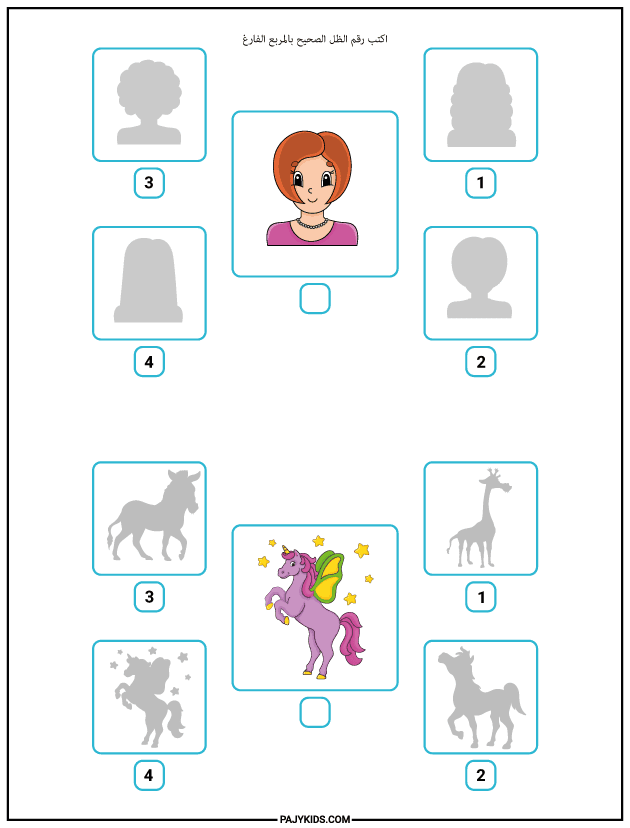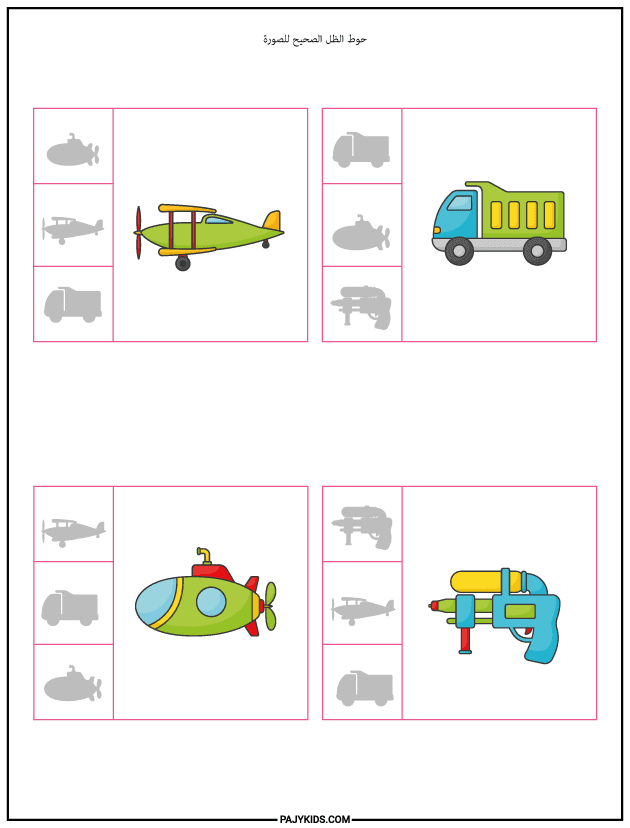The attached Preschool Worksheets are an essential and enjoyable part of the learning process in the kindergarten stage, serving as an effective educational tool that develops children’s skills in an interactive and stimulating way. These sheets, which include Preschool Worksheets like the matching and shadow recognition activities, are not just exercises; they are a means to involve the child in the process of discovery and self-learning. Integrating such Preschool Worksheets into the daily routine helps build a strong foundation of cognitive and motor skills needed in later educational stages.
Developing Cognitive and Motor Skills through Preschool Worksheets
The attached worksheets, as models for matching and shadow Preschool Worksheets, offer a perfect opportunity to develop several crucial skills in kindergarten children. On the cognitive level, these activities help the child develop skills in visual discrimination and accurate observation. In the shadow matching activity (as seen on page 1 and 2), the child learns to compare the original colored shape with the abstract gray silhouette, which strengthens their ability to analyze shapes and recognize essential characteristics regardless of color or fine details.
On the motor level, asking the child to write the correct shadow number in the empty box or circle the correct shadow for the image requires the use of fine hand and finger muscles, which enhances Eye-Hand Coordination—a vital skill for future writing and drawing.

The Importance of Worksheets in Preparation for Primary School
The significance of these worksheets extends beyond immediate skill development; they are a critical preparatory step for primary school. Accustoming the child to sit and focus on completing a specific task, as required in solving Preschool Worksheets, instills in them concentration skills and the commitment to complete assigned tasks. The introduction of numbers and writing them to link the shadow to the picture serves as an early and friendly introduction to concepts of math, reading, and writing. Additionally, these guided activities boost the child’s self-confidence upon successful completion of the task, encouraging positive engagement in a structured learning environment and making them better prepared for the academic transition ahead.
Coloring Sheets: Developing Fine Motor Skills in Children
